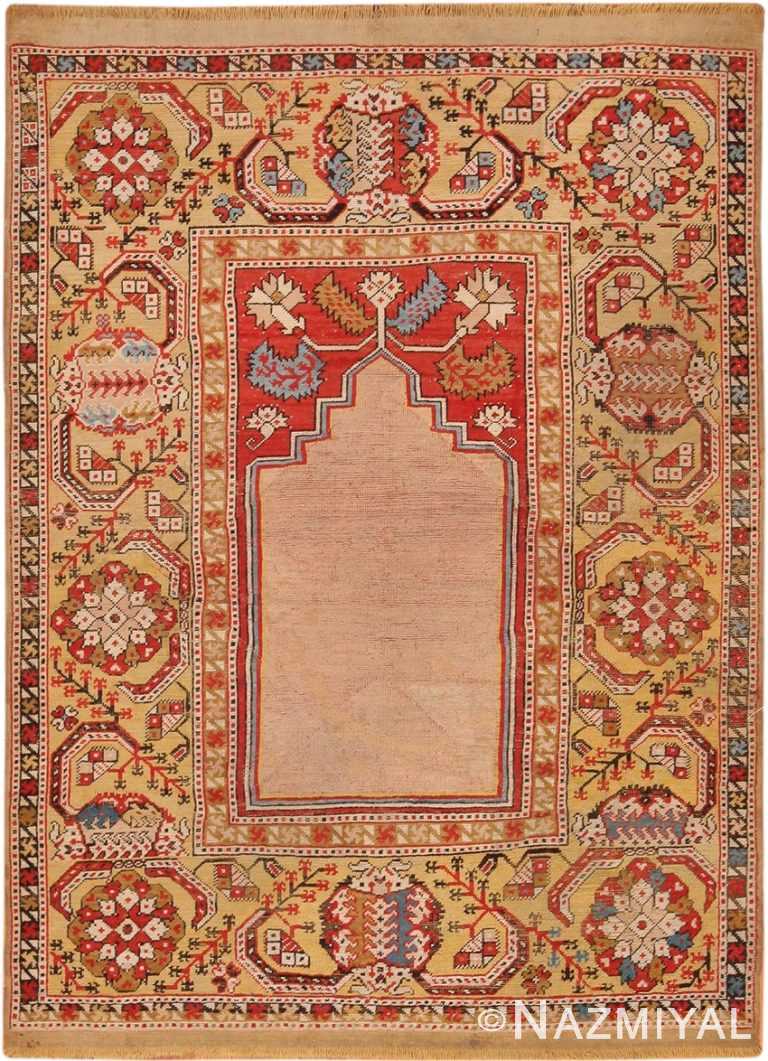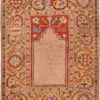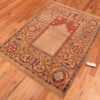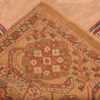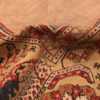Rare Collectible Antique 17th Century Transylvanian Prayer Rug 70331
Beautiful Antique 17th century Transylvanian Rug 70331, Country of Origin: West Anatolia (Gördes) / Transylvania (Romania), Circa Date: second half 17th Century – This exquisite piece is a beautiful work of art from Anatolia in the 17th century. The design of the rug is a mihrab or prayer niche. The prayer niche is surrounded by beautiful patterns derived from the iconic Ottoman court rugs, such as the prayer design Ballard rug in the Met.
It is in an exceptional state of preservation for its age and reflects a rare and unique find. The condition is due to the fact that in Transylvania such rugs were not used under foot but in the churches, on the Table of the Lord or to adorn the walls.
Transylvania’s location made it an important center for trade between the east and west. Merchants frequented the area with goods from all over Europe, the Balkans and the Near East. Many of these pieces were donated to churches, which accounts for their fine state of preservation.
The end of the 19th century saw a resurgence in the popularity of these carpets. Even though they are used in Muslim prayers, a large number of them were found in Protestant churches in Transylvania, hence the misleading denomination. They were featured in major exhibitions such as the great exhibition of Budapest 1914, entitled Turkish Rugs from Transylvania. Since late 19th century, such area rugs were among the most collectible items and entered the major museums MAA Budapest, MAK Vienna, MIK Berlin, Louvre Paris, V&A London, Met Museum.
Transylvanian rugs are exceptionally well-made and show the artistry of the Anatolian village rug weavers. All design features descend from the Ottoman floral style created by the court designers in the 16th century. They use bright colors and have a pastoral charm.
This beautiful antique rug has colors that are bright and vibrant. It features florals and geometrics that are arranged in vertical symmetry. The carpet has a balanced feel both in the design and colors. It is energetic and vibrant with large motifs that give it a tribal feel. This carpet deserves a special place in a collection where it will be treasured for many years to come. It has a formal elegance that made Transylvanian rugs popular, and it also has a bit to tribal influence, too. Transylvanian rugs are quite rare and special, and this piece is an exceptionally rare and exquisite piece.
This piece has a serrated leaf and carnation spandrel design contrasted with a stepped, undecorated prayer niche rug design . It is in immaculate condition. The wide decorated yellow border contrasts with the red red pale-yellow field. The border reflects a canonic design, with rosettes and symmetrical palmettes (derived from the classical directional palmettes), framed by sickle leaves, which in the vertical border have rotated arms. These are interspersed with fan carnations, hyacinth branches, small tulips and small petalled flowers, all drawn from the Ottoman floral vocabulary. It is an absolutely stunning example of weaving from this time period.
The antique Transylvanian rugs are some of the most collectible rugs in the world. For those who are buying rugs and want one of the very best area rugs of it’s kind, then this piece should surly top your list.

